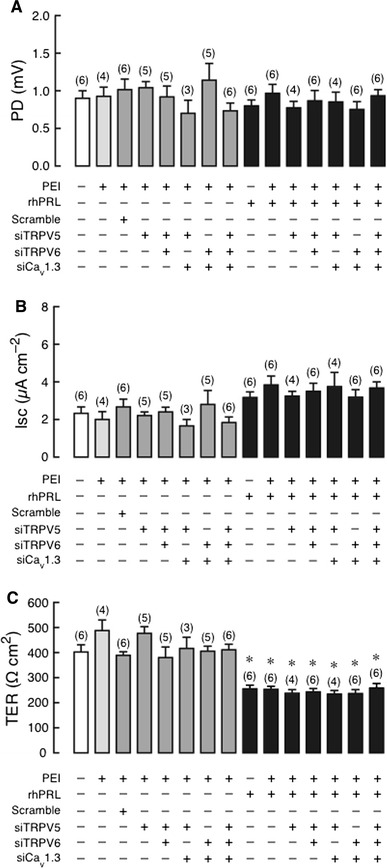Fig. 5.

a Transepithelial potential difference (PD), b short-circuit current (I sc), and c transepithelial resistance (TER) in TRPV5 KD, TRPV5/TRPV6, TRPV5/Cav1.3, TRPV6/Cav1.3 double KD, and TRPV5/TRPV6/Cav1.3 triple KD monolayers directly exposed to 600 ng/mL rhPRL. PEI was a transfecting agent. The apical side had negative voltage with respect to the basolateral side. *P < 0.05 compared with the scrambled siRNA-treated group. Numbers in parentheses represent the number of independent Snapwells. siTRPV5, siTRPV6, and siCav1.3 mean siRNAs against TRPV5, TRPV6, and Cav1.3 mRNA, respectively. The absence of changes in PRL actions in KD monolayers indicated that these calcium channels were not required for the PRL-induced increase in paracellular permeability
